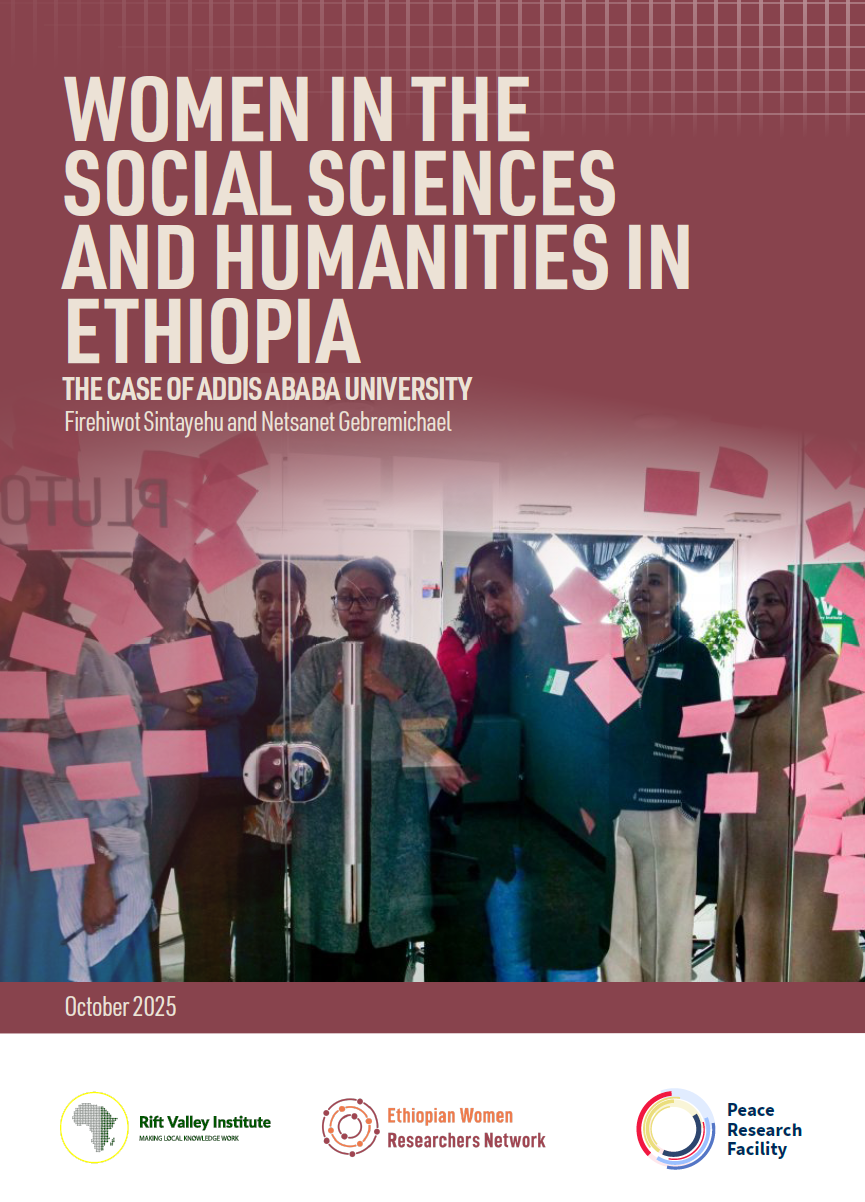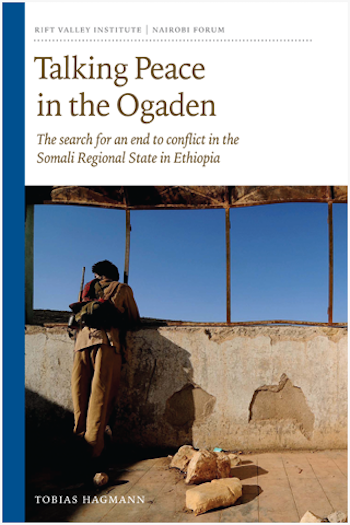In July 2014, humanitarian agencies and the government of Somalia warned of a new severe drought in Somalia, only three years after more than 250,000 people died in a deadly famine. In a report for Tufts University and the…
RVI publishes books, research reports, research papers, briefings and meeting reports in a range of formats. Publications cover policy, research, arts, culture and local knowledge in the countries of eastern and central Africa. Research publications—books, reports and papers—are peer-reviewed. Some RVI publications are also available in French and/or Arabic.
The RVI is a signatory of the Budapest Open Access Initiative (2001); all publications are free for download in PDF format under Creative Commons licences. The views expressed in books and reports published by the RVI are those of the authors, not the Institute.
SEARCH
PUBLICATION TYPE
LANGUAGE
REGION
COUNTRY
‘Objective, analytical and balanced.’ IBRAHIM FARAH, UNIVERSITY OF NAIROBI Summary Talking Peace in the Ogaden outlines the modern history of ethnic Somalis in relation to the Ethiopian state from the late 19th century to the present day, and assesses…
Key points The LAPSSET project has transformative potential for the neglected north of Kenya and for East African regional integration. A major challenge is safeguarding the environment, and the rights and livelihoods of those whose lands the project will…
This briefing examines the emergence of the Somali migration route to Uganda and its significance in the long history of Somali migration in East Africa. It discusses the factors underlying the decision-making processes of Somali refugees in relation to…
‘In Somalia, land issues are particularly complex. Those involved in both policy and practice need to understand this complexity better if durable political solutions are to be identified and property rights for individuals and communities secured. Lee Cassanelli explains…
Key points • Efforts to negotiate peace in South Sudan have been hindered by the lack of a coherent international approach such as the Inter-Congolese Dialogue eventually enjoyed. • IGAD’s assumption of a mediating rather than a facilitating role…

- By Nanjala Nyabola
- Download
Key points • A sudden, forced repatriation of Dadaab’s 350,000 Somalis would violate Kenyan and international law, could destabilize Somalia and ultimately undermine Kenyan security. • Although Kenya will not forcibly repatriate Dadaab’s Somali residents, the government’s policy is…
Key points • The political crisis in Burundi risks escalating into civil war, with an ethnic dimension. • The response from governments in the region has been muted and equivocal. • Donor countries have cut back aid, which may…
On Friday, 27 February 2015, the Nairobi Forum invited author Eddie Thomas to launch his new book South Sudan: A Slow Liberation in a panel discussion at RVI’s office in Nairobi. Peter Biar Ajak of the Centre for Strategic…
‘The information in the report is accurate and ‘spot on’ … there is a lot to learn from this important issue.’ SUAD IBRAHIM ABDI, PROGRESSIO, SOMALILAND ‘The study is unique in the research questions it raises and in the…
Recent Publications

Aid and Conflict Sensitivity in Contemporary Ethiopia
November 17, 2025
This study assesses conflict sensitivity practices among humanitarian, development and peacebuilding (HDP) actors in Ethiopia. It seeks to raise awareness and foster a deeper understanding of the evolving aid landscape in the country while analysing the challenges that affect conflict-sensitive

Enhancing the Role of Borderland Communities in Ethiopia’s Foreign Policy
October 15, 2025
Ethiopia’s borderland communities (BLCs) have historically influenced the country’s relations with its neighbours. These peripheral regions often serve as hubs for cross-border trade, repositories of natural resources and, at times, flashpoints of conflict. Surrounded by six neighbouring countries – Djibouti,

Women in the Social Sciences and Humanities in Ethiopia: The case of Addis Ababa University
October 10, 2025
This preliminary assessment is part of the launch exercise of the Ethiopian Women Researchers’ Network (EWNET). Focusing on Addis Ababa University as a pioneering higher institution in the country, the study looks into the status of women within these disciplines









